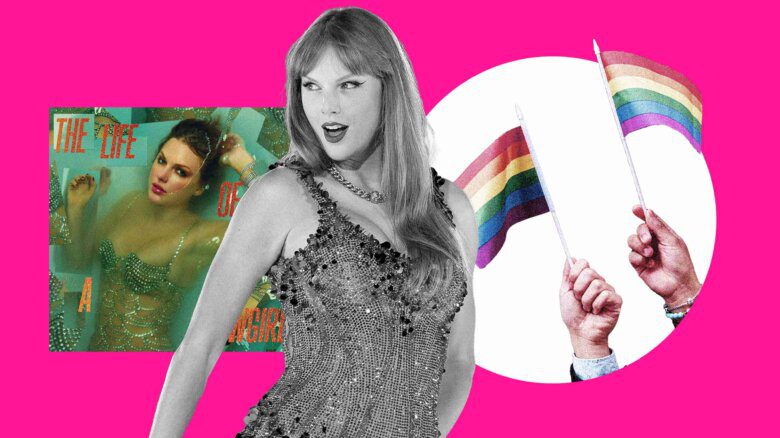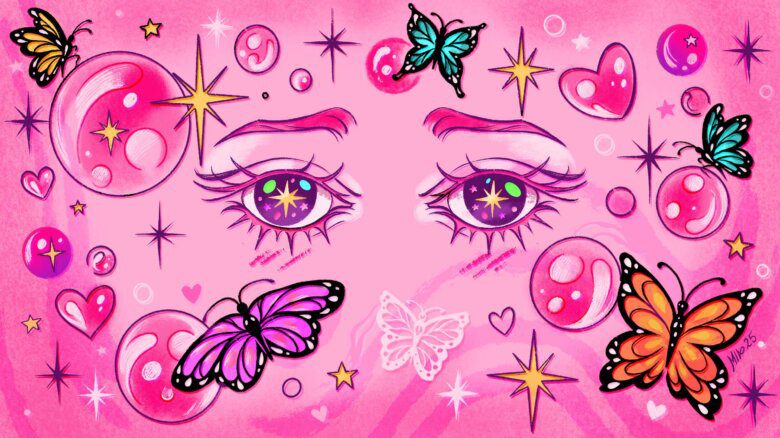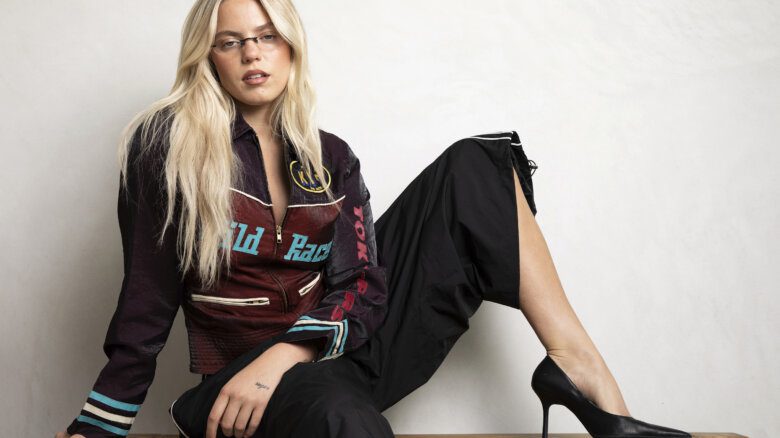I have to renew my passport this year. It’s an arduous process of forms and papers, and it’s a task I’ve left on the side of my desk for too long because I can’t decide what to do about my gender.
My current passport, initially issued in 2016, features a distinctly woman-looking 21-year Mel with side-swept bangs, a practical bob and a big fat “F” gender marker beside her. The current 30-year-old Mel, on the other hand, has a patchy beard, heavy brows and a hairline creeping dangerously upward. We are very much not the same person.
Meanwhile, my provincial ID currently boasts an X gender marker, a swap I made easily in the early years of my transition. But I’ve put off switching my passport for so long, because I can’t fully bring myself to admit that I don’t want an X on there. What I actually want is an M.
Is it cringe to want to be a man? It’s a complicated question that’s been laid bare for me by Lorde’s new single “Man of the Year” and the discourse around it. For years I’ve pushed back against my desire to be a man, even as I’ve found myself becoming one.
Last week, the New Zealand pop star released the second single off her hotly anticipated fourth album, Virgin. The accompanying video, which shows the artist binding her chest with duct tape and thrashing around while singing about ego death, was apparently inspired by Lorde’s expanding sense of gender and desire to be her own “man of the year.” It comes on the heels of her comments at the Met Gala around gender fluidity, and further interviews where Lorde has said she feels like “both a man and a woman.”
As they do whenever a celebrity says anything remotely new about their identity, the media latched on to the song and revelation of Lorde’s expansive gender to varying degrees. Autostraddle declared the song a “trans anthem.” Pink News went with the headline “Lorde announces new single ‘Man of the Year’ after addressing gender identity.” And I’m obsessed with British tabloid The Daily Mail’s headline: “Woke Lorde accused of ‘gender baiting’ as she appears to come out as non-binary … but there’s a twist.”
I can practically hear a legion of transmasc singer-songwriters around the world picking up their guitars to cover the song, while drag kings button up their tearaway shirts and slip on their egregiously large gold chains for a heartfelt performance right before intermission at the local drag night. All the power to them!
One of Lorde’s greatest strengths as an artist is tapping into the hyperspecificity of experience and capital-B “Big” feelings. On Pure Heroine, that experience was one of teenage rebellion and ennui. On Melodrama, it was a cathartic sense of imperfection. Now with Virgin, it’s gender and a new sense of self.
I admittedly went into the song a skeptic, already rolling my eyes at the provocative imagery of her chest bound with duct tape and the general thesis of “what if I, a woman, were actually a man?” To quote Miranda Priestley: “ … groundbreaking.” I’ve listened to many an angsty transmasc musician do basically the same thing.
Plus, this is far from the first time a major pop girlie has explored gender through music and imagery. Beyoncé gave us “If I Were a Boy.” Lady Gaga did the whole Jo Calderone thing. Taylor Swift’s “The Man”—and its accompanying boy-drag-filled music video—was a surface-level exploration of gender in the music industry. This didn’t seem like anything new, and I went in prepared to be disappointed.
And on my first few initial listens of the song, this first impression of “Man of the Year” seemed validated. Lyrics about ego death and becoming someone else felt familiar and not all that revelatory to me. If anything, it felt simple. Plain. Unexciting. Almost cringe-worthy.
But on a bus ride home the other night, these big questions I’ve been grappling with around my own identity clicked into perfect sync with “Man of the Year.” I was listening to the track on repeat, trying to focus my feelings about it for this piece. And I caught a glance of my reflection in the window, backlit by the lights of passing cars in the Vancouver rain, just as the song neared its end.
For a brief moment I didn’t recognize myself. I saw the light catch my beard, my broader shoulders and all the parts of me I didn’t think would ever appear even just a few years ago. The man in the reflection looking back at me with my eyes caught me by surprise.
“How I hope that I remember my gold chain, my shoulders, my face in the light. Oh,
I didn’t think he’d appear. Let’s hear it for the man of the year.”
And all at once I got what Lorde’s music has so clearly communicated for years: it’s okay to be earnest in our desire, even if it might feel a bit cringe. And suddenly I felt cracked wide open.
A common adage within trans and gender-diverse communities is the idea that our transition is an ongoing process for our entire lives. From the day we first start to consider something different for ourselves in terms of gender until the day we die, our relationship with gender is always shifting and moving. Many trans people detransition and retransition and re-evaluate themselves many times throughout their lives, changing pronouns and identifiers and names along the way. Rarely is it a singular moment of coming out, a before and after. Rather, it’s a process of new discoveries every day.
A decade ago when I would lie alone at night in my university dorm room and fantasize about having a lower voice or going topless at the beach, I didn’t even think about wanting to be a man. Not in the easy way I could say at the time that I wanted to be a journalist or a grad student or a pet owner.
In those early days of gender revelation, I just knew I wanted to be a different version of myself than the one I currently was. I’d run my selfies through iPhone app filters that would darken my brows and slap a bad CGI beard onto my jawline and see this guy appear who I knew but didn’t know. In the real world, I’d pack down my chest and ask my hairdresser for increasingly shorter cuts as a way to appease those bubbling desires. But never even to myself did I say I wanted to “be a man.”
Years later, I came out as non-binary—knowing at least for certain that I didn’t want to be a woman—and changed my pronouns to they/them. I started my medical transition. And even throughout the early years of that process, I never said I wanted to be a man—that felt taboo to admit to even myself, too vulnerable to crack open. Surely my gender was more complex, more nuanced than being … some guy, right? Non-binary identity felt full of possibilities, a big expansive umbrella to take shelter under rather than trying to pack the wholeness of myself into a little box called “man.”
Yet at every point in the transition process where I had a choice, I chose to steer toward that guy I knew but didn’t know yet. No, I wasn’t worried about too much facial hair growth on testosterone, so go ahead and up my dose. No, I didn’t even consider anything other than a full top surgery and masculine chest. Yes, I was even okay with going bald if that’s what my genetics had in store, so keep on upping that dose.
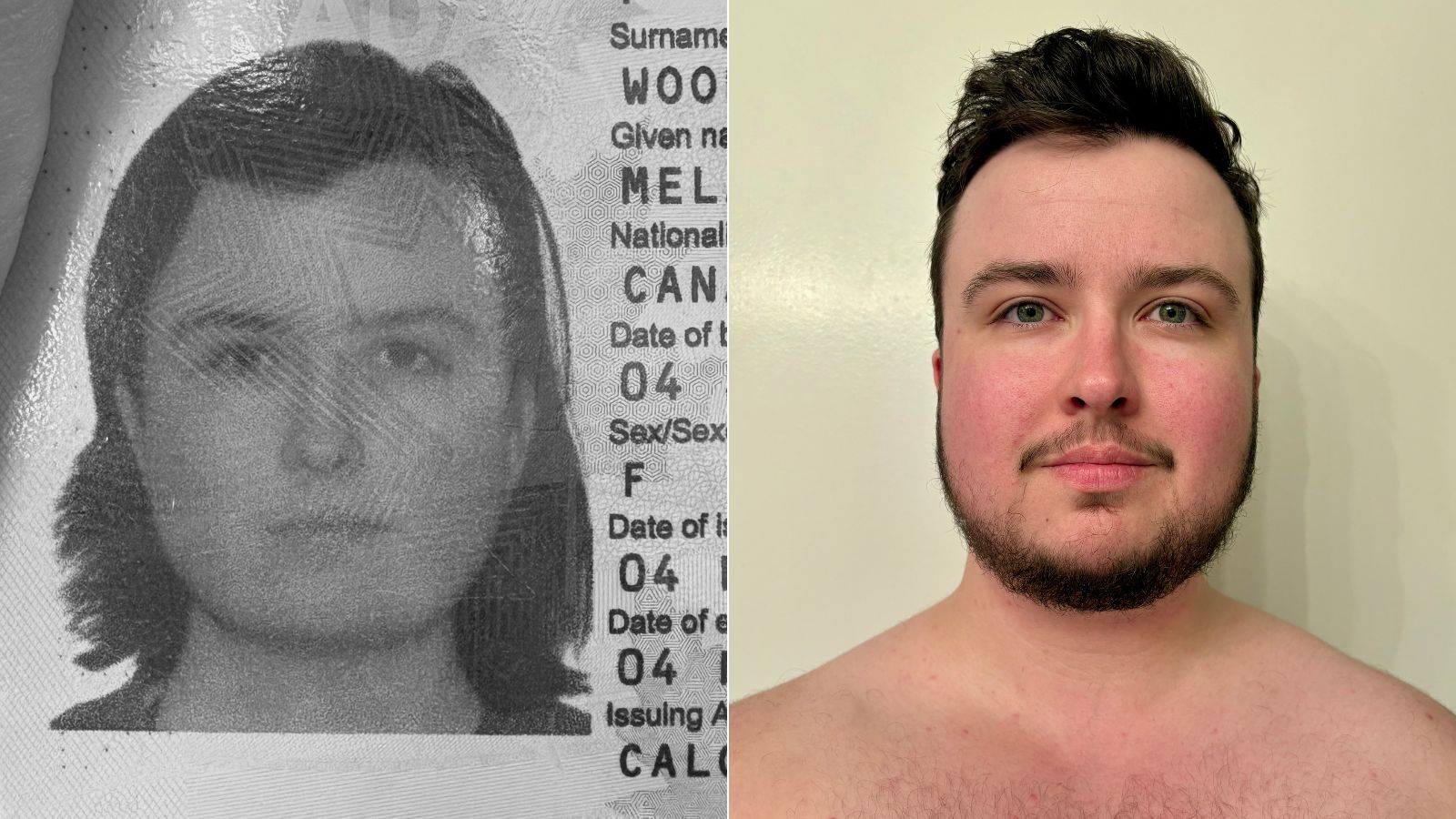
Two photos of the author: their current passport image taken in 2016, and an image from the present day in 2025. Credit: Mel Woods
And over the years, I’ve watched that guy I saw who I never thought would appear, start to appear. My partner often jokes that my body seems to love the testosterone, curling hairs quickly rippling across my chest and torso, my neck broadening, my voice dropping. I took up strength training, and watched my shoulders start to stretch wider with muscle and noticed veins start to snake down my forearms. I use the men’s washroom, bartenders call me “buddy” and strangers refer to me as “that guy over there.” To the world around me, I am a man.
And there in that bus window listening to Lorde, I saw him too. My gold chain. My shoulders, my face in the light. Half a decade into transitioning, I saw him. Even before I could bring myself to want to be a man, I suddenly found myself as one.
My initial recoil from “Man of the Year” came from my own shame at that long-held unspoken desire. How dare Lorde go and sing so bluntly about this feeling I’ve processed and worked through for years? How dare it be so easy for her to express those feelings, to lay them out in such a clear and concise and accessible way, there for anyone to read into and project on to and see themselves in?
Lorde’s stated conception of her own gender is very different from my own. But with this song and this new era focused on gender expansion, she’s constructed a vessel for all sorts of people to crack themselves open and work through these big, messy feelings. In their 2023 book, The New Masculinity, writer Alex Manley proposes a reframing of manhood: “Manhood is one thing towards which there are many paths. But even with a myriad of paths, I think it’s important to remember that you don’t have to take any of those paths if you don’t want to.” Lorde has a path, I have a path too.
Even before I heard “Man of the Year,” I was slowly becoming more comfortable with the idea of not only being a man, but wanting to be one, and letting myself sit in that desire.
Much like Lorde’s recent revelations around her gender, I wouldn’t characterize this as a distinct coming out for myself, and I still appreciate the open-endedness of identifying as non-binary and using they/them pronouns. But I also don’t rule out things changing one day. Now that I’ve found him, I want to know him more. I want to celebrate being “broken open,” as Lorde sings.
I pulled up my passport application again this week and looked at the gender-maker request form. Tentatively, I pencilled in the “M,” feeling an almost uncomfortable level of catharsis as I did so.
It’s okay to want. It’s okay to desire a different, truer version of yourself. You might think he’ll never appear, and then suddenly he’s there, staring back at you in the bus window on a rainy Vancouver night. The man of the year.
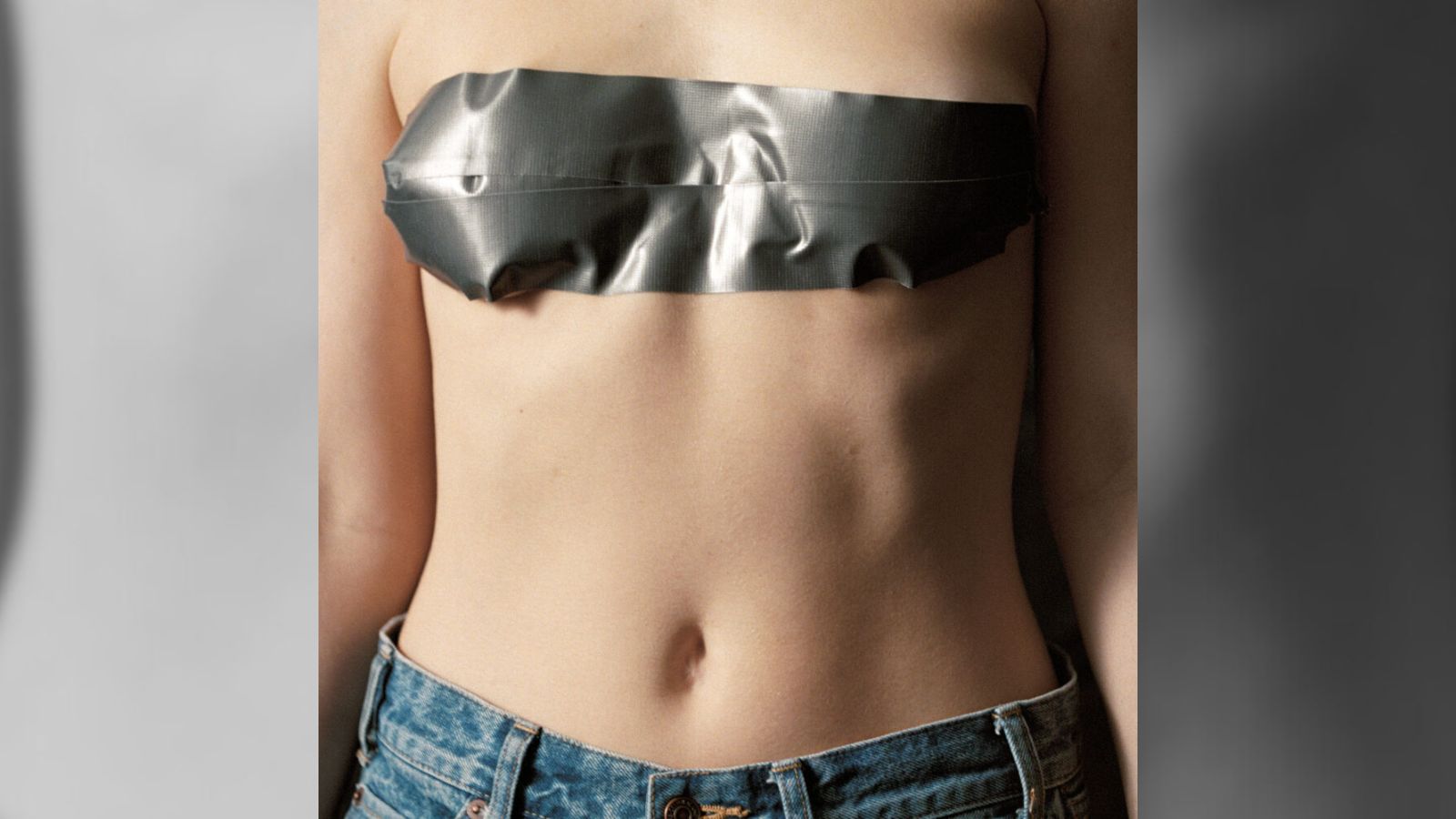

 Why you can trust Xtra
Why you can trust Xtra